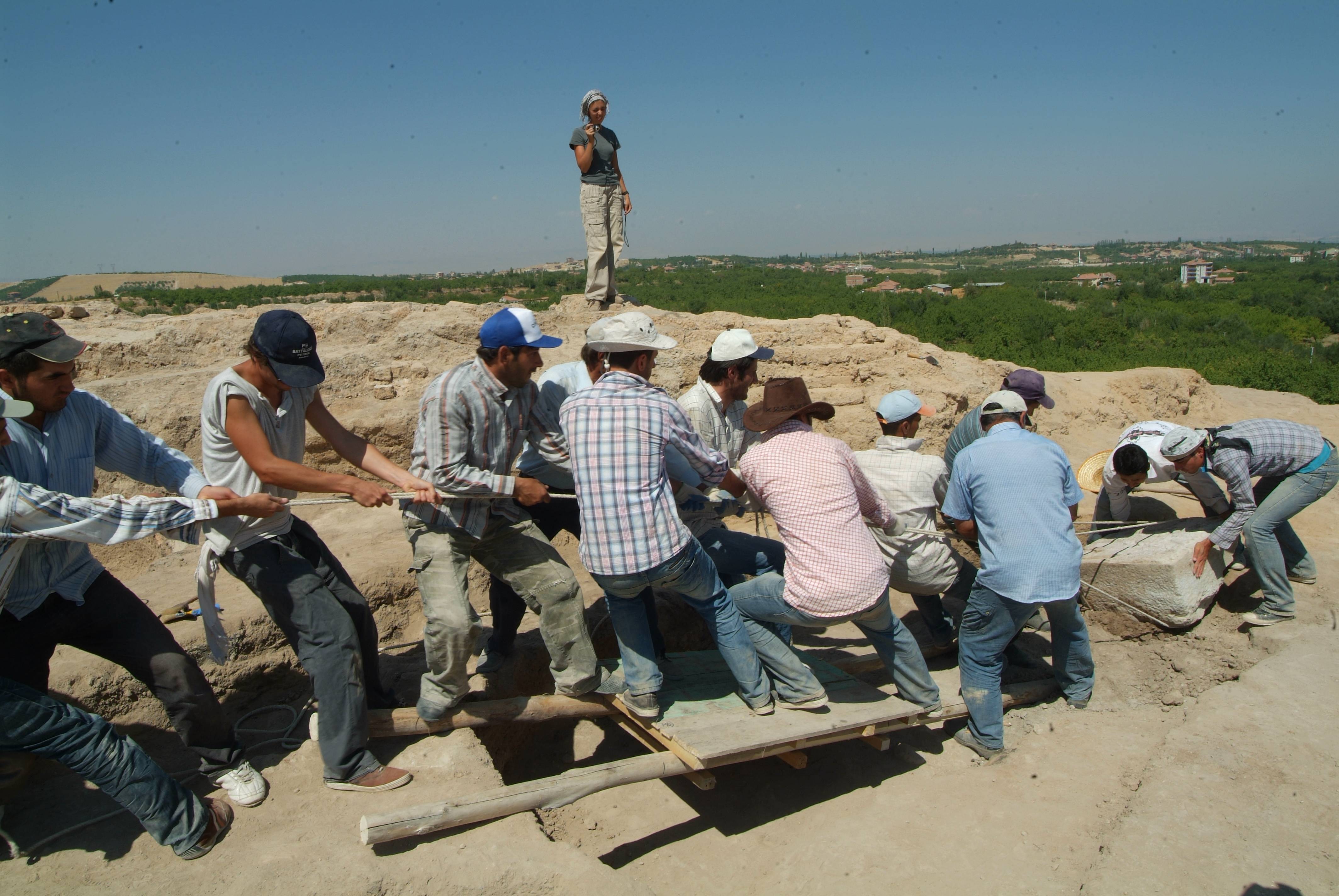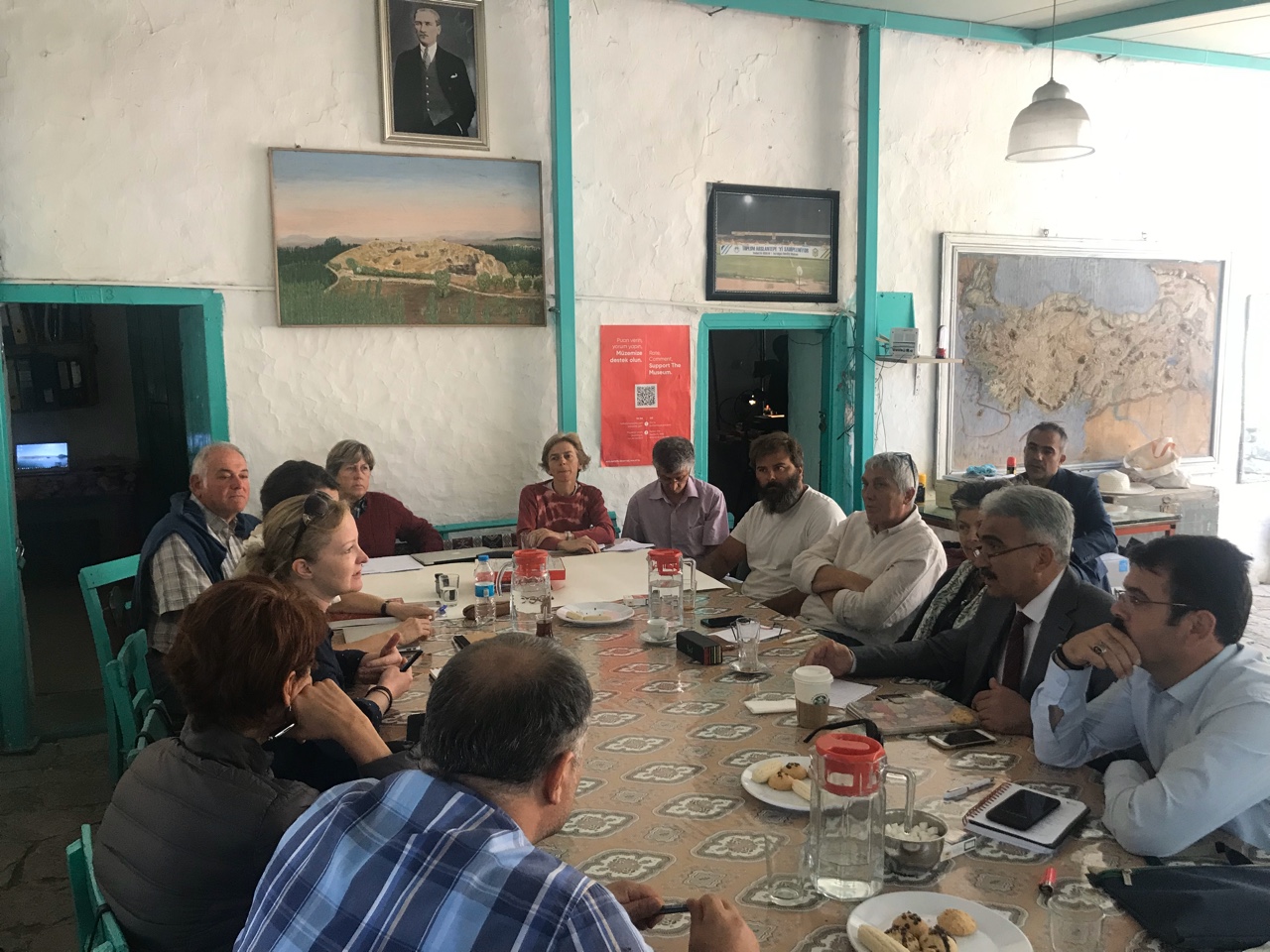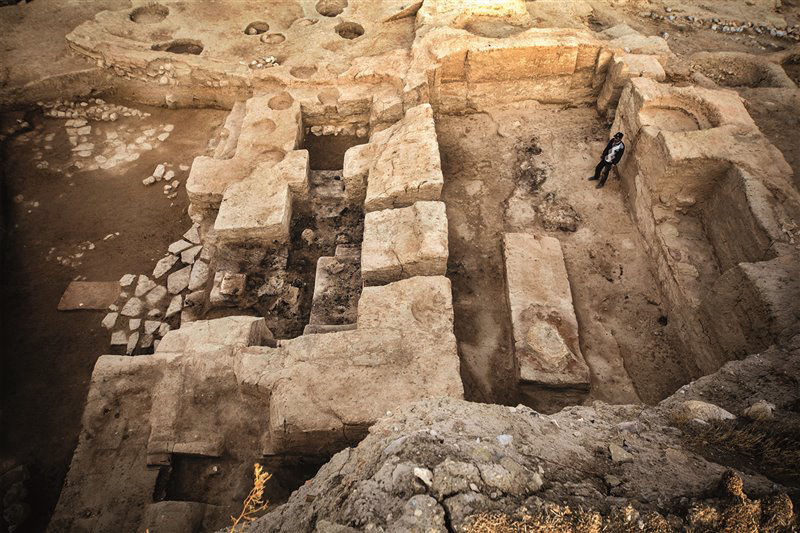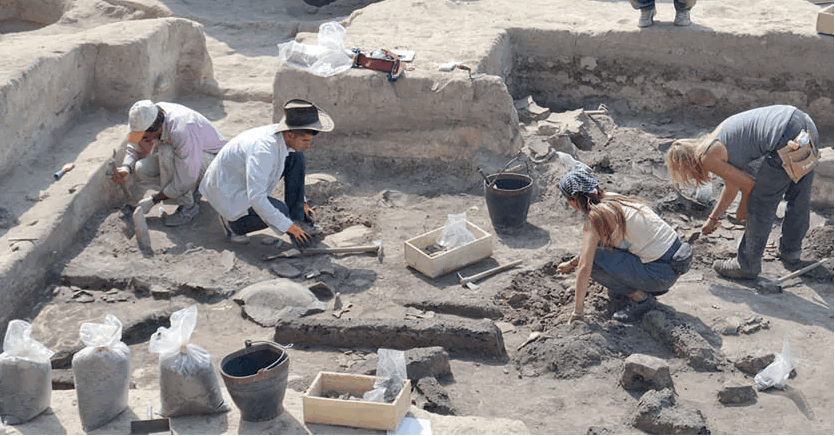dove una missione archeologica della ‘Sapienza’ Università di Roma ha portato alla luce una lunghissima sequenza di abitati sovrapposti.
A partire almeno dal 5000 a.C. e fino al Medioevo diversi gruppi umani hanno scelto, infatti, di abitare, costruire, governare, seppellire i loro morti in questo luogo.
Il sito archeologico di Arslantepe, dichiarato Patrimonio Mondiale dell’Umanità (UNESCO, 26 Luglio 2021), è il risultato di questo sovrapporsi di insediamenti umani, uno sull’altro.

Arslantepe e la fertile piana circostante
Da sessant’anni gli scavi archeologici della Missione Archeologica Italiana in Anatolia Orientale (Sapienza Università di Roma) continuano a sfogliare, livello dopo livello, questo libro di terra, che ci racconta storie complesse di cambiamenti, di villaggi e città, di case e palazzi, di templi e sepolture, di crolli rovinosi e momenti di prosperità.

Placchetta in avorio dai livelli neo-ittiti
Fino all’età Romana, Arslantepe fu sempre l’insediamento più grande e importante della regione. In particolare, Arslantepe divenne un centro nevralgico dell’Anatolia orientale del IV millennio a.C.
Qui è possibile seguire infatti le fasi formative del processo formativo delle prime società statali.
Più recentemente, intorno alla fine del XII sec. a.C., Arslantepe divenne la capitale di uno dei regni che seguirono nelle regioni un tempo solo periferi che dell’impero al crollo dell’impero ittita (1400-1200 a.C.).
A Melid/Malizi (il nome di Arslantepe in questa fase) élites locali rielaborano in modo originale le tradizioni del periodo imperiale. La testimonianza più significativo di questa fase sono sicuramente i rilievi in pietra con scene di carattere religioso e mitologico.
1894-1928

A partire dalla metà del XIX secolo, Arslantepe, come altri importanti siti archeologici del Vicino Oriente antico, fu meta dei viaggi degli esploratori occidentali. La prima concreta attestazione del sito risale però al 1894 grazie alla pubblicazione di un bassorilievo su pietra da parte di D.G. Hogarth. Il ritrovamento sollevò l’interesse di molti studiosi, tra i quali la famosa viaggiatrice e scrittrice G. Bell che visitò Arslantepe e le sue vicinanze nel 1909 fornendo un reportage fotografico fondamentale di questi primi ritrovamenti.
1932-1948

Fu però l’archeologo francese L. Delaporte a condurre i primi veri scavi archeologici ad Arslantepe, portando alla luce, nella porzione settentrionale del sito, la famosa “Porta del Leoni” di periodo Neo-Ittita, nota soprattutto per la ricchezza del suo repertorio iconografico ed iscrizioni in Luvio geroglifico. Sebbene l’avvento della Seconda Guerra Mondiale segnò la fine di questa prima serie di indagini, nel 1948 una nuova missione francese guidata da Cl. Schaeffer intraprese, per un solo anno, un’ulteriore campagna di scavo.
1961

La Missione Archeologica Italiana diretta da S.M. Puglisi e P. Meriggi, dell’Università di Roma La Sapienza e dell’Università di Pavia, riprese le indagini dell’area settentrionale di Arslantepe approfondendo ed allargando gli scavi francesi. Questo permise da un lato di indagare in maniera più estesa e dettagliata i livelli Neo-Ittiti ma anche di raggiungere, per la prima volta, i più antichi resti del II, III e IV Millennio a.C. L’ampliamento dello scavo al periodo romano e bizantino, permise inoltre la messa a punto e di un’ancora più ampia e rilevante sequenza storica.
1969

Il ritrovamento dei livelli Calcolitici alla base della sequenza messa in luce nell’area settentrionale di Arslantepe segnò un fondamentale spostamento degli interessi di indagine verso i periodi più antichi. La limitatezza dell’area indagabile impose però l’apertura di un nuovo e più ampio settore alle pendici meridionali del sito. Lo scavo estensivo qui condotto sotto la direzione di Alba Palmieri rappresentò un punto di svolta cruciale per la storia della ricerca nel sito, iniziato con la messa in luce del famoso “Tempio A” di periodo Tardo Calcolitico.
1990

Le attività di scavo condotte ininterrottamente nell’area meridionale di Arslantepe, così come l’introduzione di una vasta gamma di metodologie ed approcci differenziati inerenti agli studi dei diversi lotti di materiali portati alla luce, hanno permesso negli anni la messa a punto di una dettagliatissima sequenza archeologica. I risultati dello scavo estensivo del “Palazzo” Tardo Calcolitico ottenuti sotto la direzione di M. Frangipane hanno fornito informazioni indispensabili per la comprensione dello sviluppo delle prime società complesse a margini della mezzaluna fertile.
2007

Nonostante le caratteristiche straordinarie delle scoperte effettuate nell’area meridionale di Arslantepe, inerenti soprattutto ai livelli Calcolitici e dell’Età del Bronzo Antico, l’interesse per lo studio dei periodi propriamente “storici” non è mai tramontato. Lo scavo dell’area settentrionale del sito è infatti ripreso in anni recenti nella zona precedentemente investigata dalle missioni francesi e dai primi interventi italiani, portando alla luce la sequenza dei livelli Ittiti e Neo-Ittiti e le strutture monumentali contemporanee all’utilizzo della “Porta dei Leoni”.]
Oggi

In anni recenti gli scavi sono proseguiti nei settori meridionale, occidentale e settentrionale, investigando le fasi più antiche del Tardo Calcolitico e la transizione tra il Bronzo Tardo e l’Età del Ferro. La scoperta della “Sala delle Udienze” ha permesso di accertare che il complesso edilizio della fine del Calcolitico rappresenta un vero e proprio palazzo residenziale. Sotto l’attuale direzione di Francesca Balossi Restelli l’indagine delle fasi più antiche, così come quella dei periodi propriamente storici, procede fruttuosamente ed in continuità con la lunga storia di ricerche condotte nel sito.

Il sito archeologico di Arslantepe, Grande Scavo della Sapienza Università di Roma dal 1961, è stato inserito nelle liste del Patrimonio Mondiale dell'UNESCO. Read more

Un complesso monumentale di edifici sulle rive dell’Eufrate anatolico testimonia la nascita dello stato più di 5mila anni fa. Read more

Scavando si impara. Gli studenti della Missione archeologica italiana, diretta da Marcella Frangipane, dell’Università La Sapienza di Roma impegnati nello scavo ad Arslatepe in Turchia. Read more